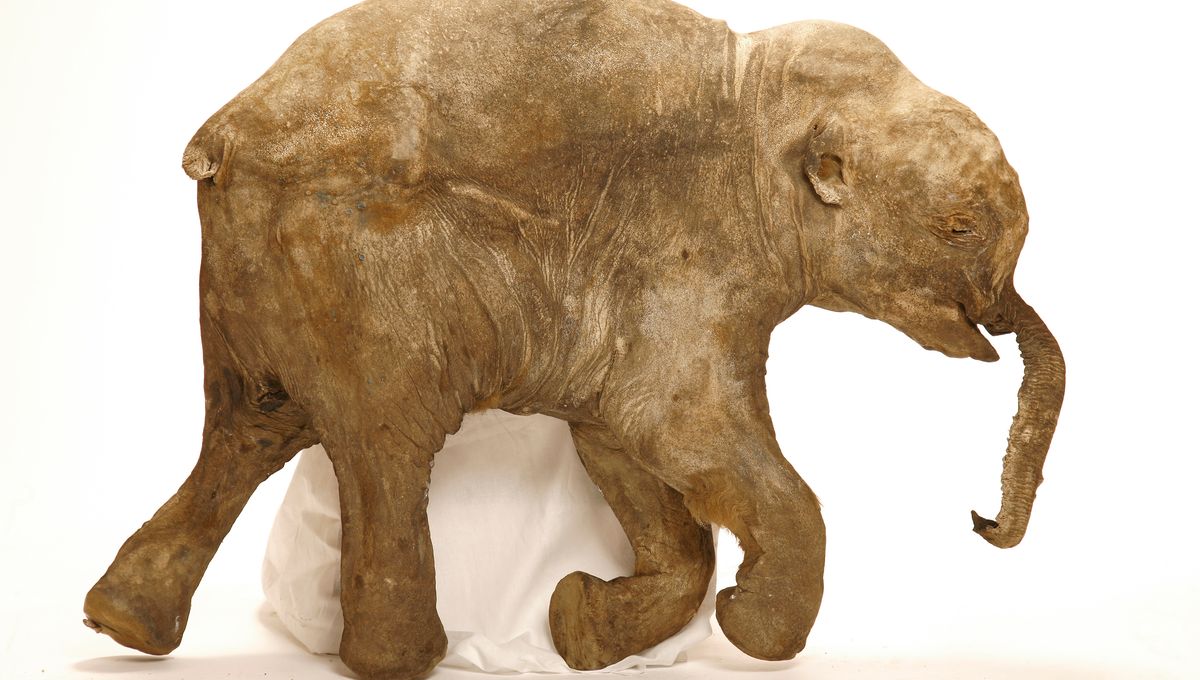
For millions of years, woolly mammoths roamed across Europe and Asia, even for a while after humans came along. Whilst we no longer live alongside them – although some are seeking to change that – it turns out there’s still plenty we can learn about these hairy giants, thanks to some remarkably well-preserved baby woollies.
Frozen in time
Lyuba and Khroma were woolly mammoths that lived more than 40,000 years ago, around 3,000 miles away from each other. Sadly, they were not long for this world; after inhaling mud, Lyuba and Khroma died from suffocation at just one and two months old, respectively. However, in their death, they have given us the opportunity to uncover a whole host of information about how woolly mammoths developed and lived.
Found frozen in two separate regions of northern Siberia, the two baby woollies are the most complete and well-preserved specimens to have ever been found. Of Lyuba, Alexei Tikhonov, leading researcher at the Russian Academy of Science’s Zoological Institute, told Reuters at the time, “Such a unique skin condition protects all the internal organs from modern microbes and micro-organisms … In terms of its future genetic, molecular and microbiological studies, this is just an unprecedented specimen.”
But before more molecular-level research, scientists wanted to find out more about their anatomy. Full-body CT scans were taken of Lyuba and Khroma, the former of which required an industrial-sized scanner at a Ford testing facility – a world-first for mammoth analysis. As well as revealing their cause of death, the thorough imaging of their skeletons will likely be helpful for future research.
“This is the first time anyone’s been able to do a comparative study of the skeletal development of two baby mammoths of known age,” said palaeontologist Daniel Fisher, who co-authored the study describing the research, in a statement.
“This allowed us to document the changes that occur as the mammoth body develops,” Fisher said. “And since they are both essentially complete skeletons, they can be thought of as Rosetta Stones that will help us interpret all the isolated baby mammoth bones that show up at other localities.”
Mammoth DNA testing
Tikhonov may have been hopeful of genetic studies, but this is no mean feat. Obtaining DNA from ancient specimens is notoriously difficult, even in cases such as these where the bodies themselves appear well-preserved; this is because DNA degrades over time. However, scientists have been able to recover mitochondrial DNA from woolly mammoth remains, including Lyuba.
If it hasn’t already been drummed into your head by high-school biology, mitochondria are the “powerhouse of the cell”, producing the energy needed for a cell to carry out its business. They are inherited maternally and have their own DNA – the mitogenome – which is less prone to degradation and so is a useful tool in tracing an ancient species’ ancestry.
The sequencing of Lyuba’s woolly mammoth mitogenome helped in a study that revealed how mammoth populations spread and diversified across the Northern Hemisphere during the Pleistocene.
By comparing the mitogenomes of woolly mammoths like Lyuba with those from Columbian, Jeffersonian, and pygmy mammoths, researchers discovered that there were at least two distinct stages of interbreeding in North America. In one of these stages, migratory Siberian woollies bred with resident American mammoths, introducing woolly mammoth phenotypes to the continent.
Can we bring the baby mammoths back to life?
Of course, where there’s DNA to be found, there are also those looking to go full Jurassic Park. As previously discussed, extracting the DNA necessary to bring woolly mammoths back to life would be difficult, but that hasn’t been enough to put people off.
Back in 2021, Colossal, a startup co-founded by well-known geneticist George Church, secured $15 million of funding in its quest to bring back the woolly mammoth. Clearly, when Dr Malcolm said, “Life finds a way”, he forgot to mention that finding a way involves a mammoth amount of money.
However, this isn’t de-extinction in action – the company aims to make a woolly mammoth-Asian elephant hybrid, so we won’t be getting an exact Lyuba or Khroma clone any time soon. According to Colossal’s website, the hybrid “will walk like a Woolly Mammoth, look like one, sound like one, but most importantly it will be able to inhabit the same ecosystem previously abandoned by the Mammoth’s extinction.”
Although some are calling into question the ethics of its goal, the company believes that rewilding the Arctic tundra with mammoth hybrids could stop, or even reverse the impact of climate change in the region. “Never before has humanity been able to harness the power of this technology to rebuild ecosystems, heal our Earth and preserve its future through the repopulation of extinct animals,” said Ben Lamm, CEO and co-founder of Colossal, in a statement.
Only time will tell whether such ventures will be successful. Beth Shapiro, a palaeogeneticist, told the New York Times that she feels a mammoth revival “is a long way in the future”. Nevertheless, with the discovery of well-preserved specimens like Lyuba and Khroma, we have a better understanding than ever of everyone’s favorite ancient – and if life really does find a way, modern – giants.
Source Link: Perfectly Frozen Baby Woolly Mammoths Reveal Secrets Of Prehistoric Pachyderms